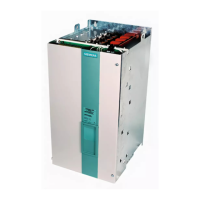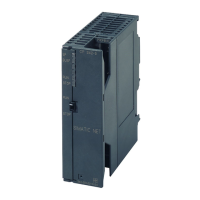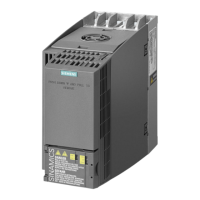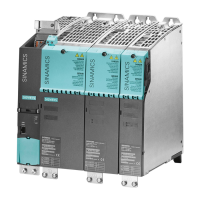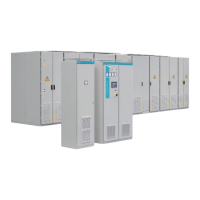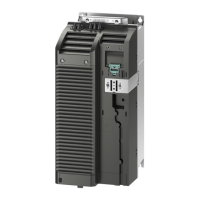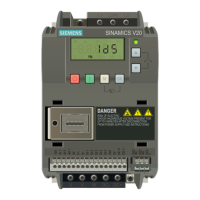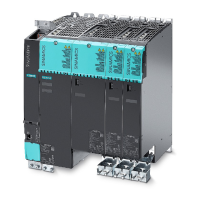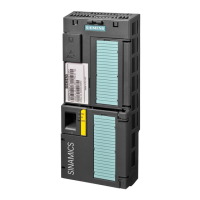08.2012 Technology Option F01
Siemens AG 6SE7087-6QX70 (Version AN)
SIMOVERT MASTERDRIVES Compendium Motion Control 9-63
Via the simulation mode it is also possible to test the interaction of a
higher-level control system with the positioning functions in the drive.
An axis can be activated via U503 independent of the selected
operating mode of simulation (U503 = 1) and switched back to normal
operation (U503 = 2).
If the SIMATIC M7 standard software GMC BASIC /1/ is used,
simulation can be selected or deselected via the "Simulation input"
task. The selection is stored in the EEPROM.
Activating simulation mode
After "Simulation ON", the technology must be reset via the control
signal [RST] (Reset technology) or the drive must be re-energized
(Power OFF/ON). Simulation is not activated until this has taken place.
De-activating simulation mode
After "Simulation OFF" the technology must be reset via the control
signal [RST] (Reset technology) or the drive must be re-energized
(Power OFF/ON). Simulation is not de-activated until this has taken
place.
9.4.20 Setpoint output and enabling [817]
Sheet [817] shows the output of the following setpoints to the basic unit:
♦
Position setpoint (with jerk limiting)
♦
Speed setpoint for the speed control modes (homing and control)
♦
Speed precontrol value for the position control modes (setup, MDI,
automatic, synchronization)
♦
Acceleration precontrol value (not yet implemented in V1.2)
Binector B305 is used to switch between the position control modes
(B305 = 0) and the speed control modes (B305 = 1).
At the right-hand border of [817] you will find the parameters required in
order to connect these signals to the position, speed and torque control
systems.
9.4.21 Faults, warnings, diagnostics [818]
The main faults and warnings generated by the technology are shown
on sheet [818] together with diagnostic parameter U540 of the
technology.
You will find further information on faults, warnings and diagnostics in
the section of the same name at the end of this chapter.

